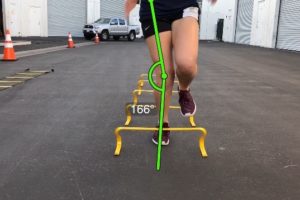Dealing with chronic shoulder pain can be not only physically uncomfortable but emotionally distressing as well. Everyday tasks that once seemed effortless can become challenging. If you’ve been living with this persistent discomfort, it’s time to explore the healing potential of physical therapy. In this article, we’ll delve into three key ways physical therapy can be your ticket to relief from chronic shoulder pain, along with tips on how to maximize the efficiency of your therapy sessions.
1) Customized Exercise Programs for Strength and Mobility
One of the cornerstones of physical therapy for chronic shoulder pain is the development of tailored exercise routines. These exercises are designed to target specific muscle groups that play a crucial role in shoulder stability and mobility. Here’s how to make the most of this aspect of therapy:
Regular Practice: Your physical therapist will recommend a set of exercises for you to perform regularly. Consistency is key. Follow their guidance diligently, as it’s through these exercises that you’ll build strength and flexibility.
Progressive Overload: As you gain strength and your pain subsides, the intensity of your exercises may increase. Embrace this progression—it’s a sign of healing.
Keep an open line of communication with your therapist. If any exercise causes excessive pain or discomfort, let them know so they can adjust your program accordingly.
2) The Power of Manual Therapy Techniques
Physical therapists are trained in various manual therapy techniques, which can provide immediate relief and contribute significantly to long-term healing. These techniques include:
Soft Tissue Mobilization: This involves your therapist using their hands to massage and manipulate soft tissues around the shoulder. It can help reduce muscle tension, alleviate pain, and promote relaxation.
Joint Mobilization: Gentle movements applied by the therapist can improve joint function and relieve pain stemming from stiffness or misalignment.
Trigger Point Therapy: Focused pressure on specific trigger points within muscles can release tension, reduce pain, and improve muscle function.
During manual therapy sessions, communicate openly with your therapist about your pain levels. They can adjust their techniques to ensure your comfort and provide you with the most effective treatment.
3) Education for Injury Prevention
To achieve lasting relief from chronic shoulder pain, it’s essential to understand the contributing factors and adopt preventive measures. Your physical therapist can be an invaluable source of knowledge in this regard:
Ergonomics: If your work environment or daily activities contribute to your shoulder pain, your therapist can assess your situation and suggest changes. This may include adjustments to your desk setup, chair, or computer screen to reduce strain on your shoulders.
Posture Correction: Proper posture is fundamental for shoulder health. Your therapist can teach you how to maintain good posture during daily activities, whether you’re sitting at a desk, working on a computer, or lifting objects.
Physical therapy is a highly effective and efficient approach to addressing chronic shoulder pain. By actively participating in your therapy sessions, adhering to your exercise routines, and incorporating posture correction and ergonomic changes into your daily life, you can expect substantial relief from shoulder pain and improved overall function. Remember that healing may take time, so be patient and committed to the process. Consult a physical therapist today to embark on your journey toward a pain-free, active life.
As always, we hope this helps! For any questions and all suggestions, please email us at TeamSP@SportsPerformancePT.com
If you want to know more information about how we can help, get started with a FREE discovery phone call.
Click the following link -> DISCOVERY PHONE CALL.
– Dr. Chris

STAY CONNECTED
Instagram: CLICK HERE
Facebook: CLICK HERE
YouTube: CLICK HERE
Podcast: CLICK HERE
TUNE IN TO OUR PODCAST














